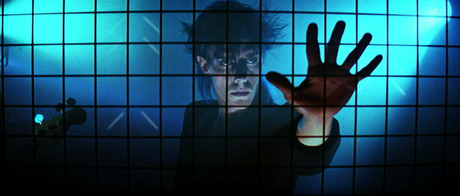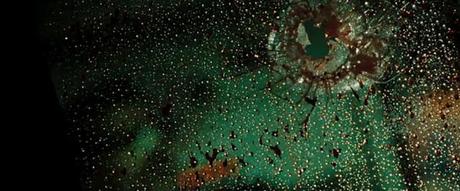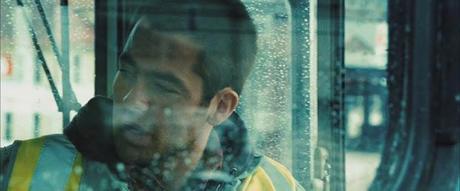It can sometimes be difficult to separate out Tony Scott's gifts as a populist filmmaker when stacked against less skilled "cacophonists" like Michael Bay who followed in his wake and whom he left in the dust with his late-career reinvention. But in Scott's films are a care for his actors wholly absent for so many of today's blockbusters, and his movies consistently offered up some of the finest, most sincere performances to be found in action films. Scott's unabashed affection for working-class heroes forced to rise to the occasion gives his films a humanity that makes even his wildest efforts (and most savage, like Man on Fire) are not merely meat grinders. Not everything Scott turned to gold, but until his tragically truncated end, he found ways to turn the inherent excesses of blockbuster filmmaking into aesthetic statements rather than wan spectacle. He will be missed, but at least we still have his work, of which these 10 stand out as highlights:
10. Spy Game

Perhaps Scott’s coldest film since his debut, Spy Game serves as one final, “conventionally” hyperactive workout before his entering into his abstract painter late career. Low lighting and muted color palettes stress a gritty realism uncommon to all his work but especially was what coming down the line. A recurring element of Scott’s work concerns the knotty, ass-covering procedures of bureaucracies, whether transportation services or military hierarchies. Spy Game devotes its time so thoroughly to the titular mechanisms of intelligence work, centered on Robert Redford’s CIA agent hoodwinking his own colleagues through a distracting series of flashbacks and subtle misdirects, that one almost forgets he does all this to prevent a friend and comrade’s impending execution. Like a handful of other Scott films, this is deceptively inert, only occasionally livened by an actual action setpiece yet still visceral thanks to judicious editing and kinetic camerawork.
9. The Hunger

Tony Scott’s first feature takes its cues from big brother Ridley, all metallic color tones and carefully ordered chill. The opening montage, juxtaposing Bauhaus’ performance of “Bela Lugosi’s Dead” with two vampires lasciviously stalking their prey and a lab monkey shrieking in a bloody rage, puts Scott’s admiration of Nicolas Roeg on equal display. Casting Catherine Deneuve and David Bowie as emotionally removed, sexy bloodsuckers was a coup, and seeing Deneuve play a kind of Lady Bathory role, creating vampiric lovers only to drain away their lives to remain young. The plot convulsions are wild enough for a later Scott film, and it does not always mesh well with the completely-locked down style, but {The Hunger} is nevertheless a strikingly formal debut for a director who would become one of its great populist aesthetes.
8. The Last Boy Scout

Scott’s capacity for finding nuance in ostentation can be clearly seen in nearly every frame of The Last Boy Scout, in which a smoky haze coats even exterior shots. The ultra-cool cigarette smoke of classic noirs thus becomes a carcinogen fog, asthma-inducing just by watching the movie. That disgusting mist visualizes Shane Black’s cynical screenplay, best seen in the stunning opening scene that fell prey to some censorship but still emerged one of the most disturbing, sick jokes on action film audiences ever filmed. Yet the easy rapport between Bruce Willis and Damon Wayans tempers the black-comic vision as much as Scott’s outsized action, and the same football field that provides the backdrop for the horrifying open hosts the almost parodic goofiness of the triumphant ending, which takes such a silly pleasure in violence that it may actually be bleaker than the start.
7. Enemy of the State

A prototype for Scott’s later forays into post-postmodern realms of multi-platform image collages and the feeling of a camera always watching the characters, Enemy of the State finds Will Smith at the top of his game as an almost Hitchcockian wrong man pursued by U.S. intelligence forces trying to cover up their clandestine activities. Scott’s film fits with several of Brian De Palma’s mid-to-late-‘90s works about an overinflated military turning on its country in the wake of the Cold War, and its vision of a citizen pursued with every means at the government’s disposal is eerily prescient of a country that now operates according to its Constitution seemingly only at its convenience. Smith shows a vulnerability here he too rapidly abandoned in his carefully planned (and successful) quest to become king of the box office, and his chemistry with Gene Hackman (all but openly playing off his seminal role in The Conversation) is so believable, tense and ultimately respectful that the movie also emerges 10 times the buddy film the Men in Black series ever offered.7.
6. The Taking of Pelham 1 2 3

For some, The Taking of Pelham 1 2 3 might represent Scott’s emperor’s-new-clothes moment. For his supposedly breakneck, visceral style, the director’s remake of one of the tautest action-thrillers of the 1970s is absolutely languid in comparison, stylish add-ons and all. Yet where the original focus with impeccable precision on its story, Scott's film explores the contours around the plot. John Travolta's Ryder adds a level of pulp commentary, a Wall Street trader busted for illegal practices and seeking vengeance in his unstoppable arrogance. Pit against him is a man in hot water for his own fiscal crimes, albeit of the sort that stem from desperation, not greed. Denzel Washington's character is the sort of person that people like Ryder ruined with their reckless betting, and as unexpectedly poignant as the film's "romance" between its conflicting figures is, there is a bit of a crowd-pleasing element to the sight of a working-class stiff putting a slug into the macho-bluffing demon soul of Wall Street.
5. Crimson Tide

An obvious urgency underscores Crimson Tide, with its fears of international nuclear war exacerbated by divisions within each side. The Russians attempt to prevent fanatical members of their own citizenry from launching nukes, while the American submarine on which the film takes place soon splinters among those favoring a preemptive strike and those unwilling to risk nuclear holocaust. Indeed, the principal conflict of the film does not concern the standoff between the U.S. and Russia but the stalemate between Gene Hackman’s submarine captain and Denzel Washington’s executive officer. With canted angles capturing the tight quarters of the submersible and a play of blue, green and red lights dancing over characters faces, Scott adds visceral intensity to what is primarily a film about a moral stand-off rather than an armed one. “We’re here to preserve democracy, not to practice it,” Hackman chastises Washington early in the film, a statement that becomes the basis for the film’s conflicts of tough ethical choices and how a chain of command can weigh on them. In essence, Crimson Tide is an action film about the need for due diligence, even inaction.
4. Domino

Perhaps the most avant-garde summer blockbuster ever made, Domino followed through on the aesthetic reinvention of Man on Fire with a free-for-all. Narratively and thematically unfocused, Richard Kelly’s emptily heady screenplay leaves wide gaps Scott fills with techniques so ancient they become new and innovative all over again. Superimpositions, multiple exposures, hand-cranking and more tear even the faintest amount of traditional biopic structure to shreds, leaving only an impressionistic abstract of saturated color and collage. Bonus points for getting Keira Knightley’s best performance to date, worlds removed from her day job as a glorified corset model and eliciting a nastiness from her that has been sadly underused since. The image of her snarling, crooked teeth illuminated in bursts of muzzle flash as she takes furious, despairing revenge for her lost comrades is one of the single great images of Scott’s career. Or is it many images in one?
3. Unstoppable

If “pure cinema” can be said to exist, few films qualify for the term like Unstoppable. Forced into linearity by its very conceit, the film sharpens Scott’s kaleidoscopic late career into what has (tragically) become the ultimate send-off. In some ways it is the Platonic ideal of Tony Scott movies: Denzel Washington at his most working-class, bureaucracy at its most noxious, a setting that allows no let up in the action, and character drama that requires no more than one brief monolog for each lead and a series of nuanced interactions that builds mutual respect and admiration. Indeed, Unstoppable is as much a film about two like but separate men becoming friends as it is their united effort to save a town from a disastrous chemical spill. Unstoppable won Scott the best reviews of his career, a shame in retrospect that so many did not finally get him until it was too late.
2. True Romance

Nowhere does Scott’s way with actors shine like it does in True Romance. Aided by Quentin Tarantino’s superb script (which Scott actually managed to improve by straightening out its chronology and giving this demented fairy tale the happy ending it needed), the director always grounds the characters front and center despite all the visual flourishes. Not until Tarantino wrote the first scene of Inglourious Basterds did he top the infamous “eggplant” scene between a sinisterly off-the-cuff Christopher Walken and a doomed Dennis Hopper, a scene so perfectly written that Scott demonstrates a careful restraint and cedes all power to the actors. Elsewhere, the film makes for a more controlled companion piece to Wild at Heart, a pop-culturally hip, oneiric bedtime story for the ‘90s. The climactic firefight, complete with pillow stuffing billowing in the air à la Zéro de conduite, is so nice Scott used it twice when a variant popped up in Enemy of the State.
1. Déjà Vu

Until Pedro Almodóvar made The Skin I Live In, Déjà Vu stood as the only film to not only successfully replicate some of the dense identity crises of Vertigo but to credibly build upon them. Scott’s time-travel thriller uses the hero’s maddening quest to save a doomed woman as a microcosmic wish for saving all of New Orleans, where the film was filmed in the wake of Katrina. The film stands as Scott’s purest pursuit of a happy ending, shattering the physical properties of space-time just to let the guy get the girl. It also allows the director to fully engage in his love of multiple, layered images, culminating in the ingenious car chase in which half the frame shows the pursued car in the past as the other half shows the present-day chase after the vehicle. The current cinematic trend toward aesthetic bewilderment has been nigh-unbearable, but here it is elevated into pure virtuosity.

